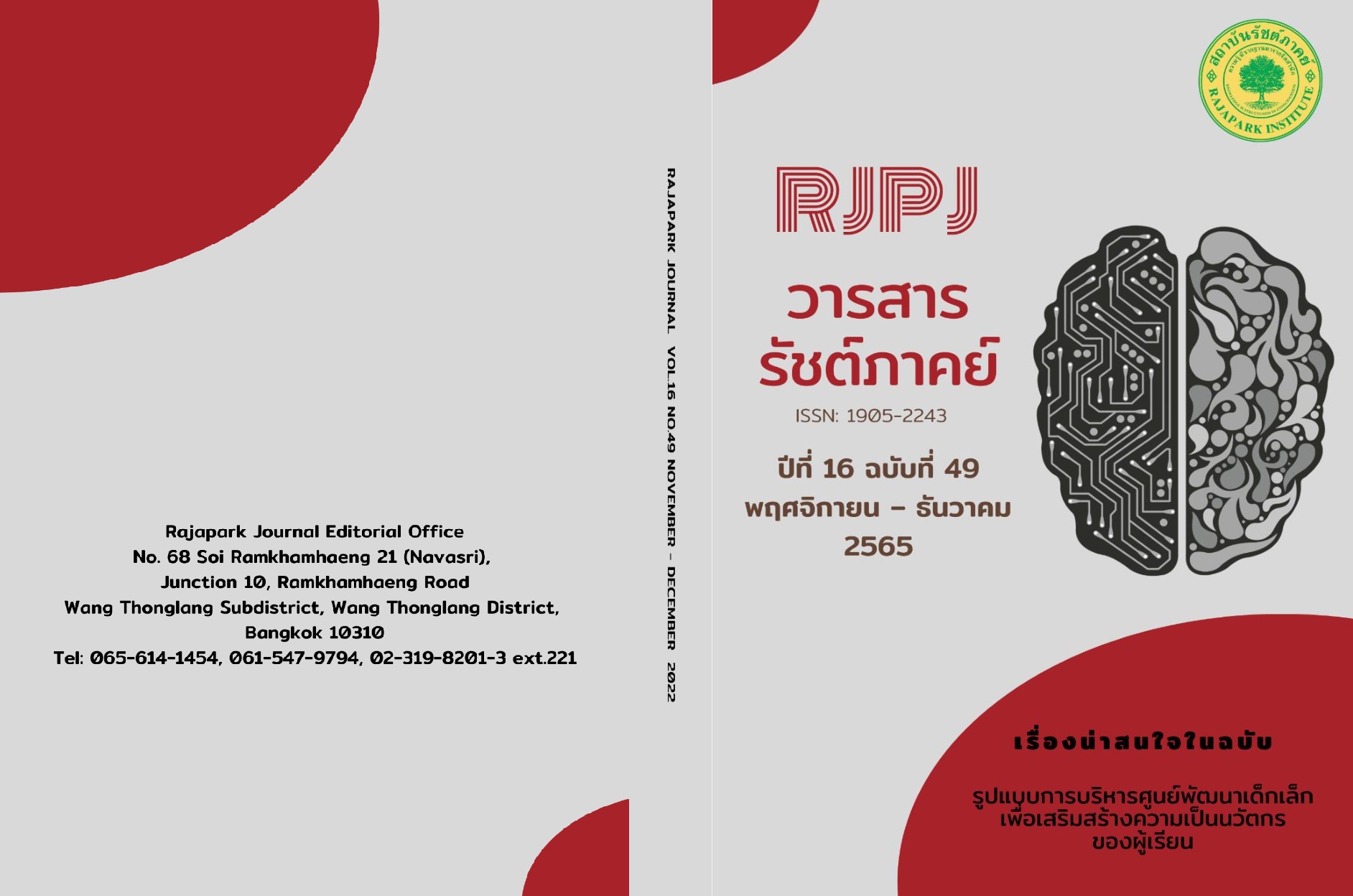Cultural Management: A Case Study of Cultural Activities Management of Secondary Demonstration Schools
Main Article Content
Abstract
The objectives of this article were: 1) to study the cultural management of the demonstration school, including the concepts, policies, activities, and methods of cultural activities; and 2) to study the views of stakeholders on the cultural activities of the demonstration school. This study consisted of qualitative research, which was collected through in-depth interviews with 90 people, and quantitative research, which was collected through a questionnaire with 137 people. The qualitative findings found that there were two types of activity. These consisted of annual activities and circumstantial activities. Cultural management methods consisted of 1) designing a project to the administrators, 2) considering and approving the budget, 3) division of duties and structure of work, with cultural resource management, 4) public relations, 5) evaluation. The quantitative findings of the stakeholders’ view revealed that the management at the demonstration school level gave priority to arts and culture at the highest level (mean 4.48). An outstanding operation approach had the highest level (mean 4.49). While school administrators had notable observations about the expression of interest, attention, and empathy at the highest level (mean 4.41), According to the suggestions of students, it was found that the crucial aspect of cultural management is a system of motivational strategies for students to participate rather than setting rules to force them to do so.
Article Details

This work is licensed under a Creative Commons Attribution-NonCommercial-NoDerivatives 4.0 International License.
Views and opinions appearing in the Journal it is the responsibility of the author of the article, and does not constitute the view and responsibility of the editorial team.
References
Koson, C. (2018). Management of Cultural Capital of Northern Thai Tribe. Journal of Administrative and Management, 6(2), 64-73. https://so02.tci-thaijo.org/index.php/RCIM/article/view/150672/110555
Longinou, D. (2020). The Benefits from Cultural Activities at A School Environment. Journal of Contemporary Education Theory& Research, 4(1), 8-13. DOI: 10.5281/zenodo.3769252
Maneephruek, N., & Pholprasert, A. (2017). Guidelines for Art Education to Promote Multicultureal Values In Elementary International Schools. OJED, 12(4), 531-546. https://so01.tci- thaijo.org/index.php/OJED/article/view/161713/116632
Maryani, M., & Aguskin, L. (2018). University Students’ Understanding on Cultural Activities in American Culture Class. Lingua Cultura, 12(2), 169-177. DOI:10.21512/lc.v12i2.4043
McAleese, D., & Hargie, O. (2004). Five Guiding Principles of Culture Management: A Synthesis of Best Practice, Journal of Communication Management, 9(2), 155-170. DOI:10.1108/13632540510621399
Nerngchamnong, K. (2020). Cultural Knowledge Management. Journal of Art an Cultural Perception, 19(2), 216-230.
Pongthong, K., & Chaiamporn, S. (2019). Cultural Management Model of Ban Mark Kham and Ban Mark Muang in Trirath Municipality in AEC Era. Journal of Humanities & Social Sciences (JHUSOC), 17(1), 49-66.
Popenoe, D. (1993). American Family Decline, 1960-1990: A Review and Appraisal. Journal of Marriage and Family, 55(3), 527-542. https://doi.org/10.2307/353333
Rodkaew, P. (2011). Need for Recreation Management of Personel in the Central of Bunditpatanasilpa Institute[Master’s Thesis, Srinakarinwirot University].
Wanwichai, R. (2016). Cultural Management: A Case Study of Thai Folk Performances in Uttaradit Province, Journal of Cultural Approach, 17(31), 18-30. https://so02.tci- thaijo.org/index.php/cultural_approach/article/view/58349


